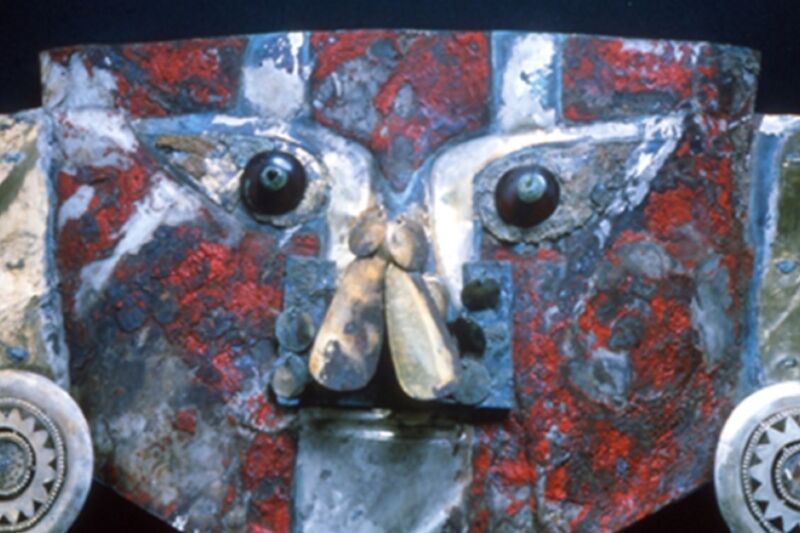Traces of human blood have been discovered in the red paint that decorated a gold mask found on the remains of an elite man who died 1,000 years ago in Peru, a new analysis reveals.
The man, who was between 40 and 50 years old at the time of his death, lived during the Sicán that spanned from 750 A.D. to 1375 – an era known for its dazzling array of gold objects, many of which were buried in tombs of the elite class.
The tomb was originally unearthed in the 1990s and archaeologists at the time concluded the red paint cinnabar, a brick-red form of mercury, but the effective organic binder remained a mystery – until now.
Scientists, led by Izumi Shimada, founder of the Sicán Archaeological Project, reassessed the ancient burial mask and found unique peptides that match human blood and bird egg proteins.
‘The presence of human blood would support previous ideas that red cinnabar paint may represent ‘life force’ intended to support ‘rebirth,’ the team shared in the study published in the Journal of Proteome Research.

A gold mask discovered on the remains of an elite man who died 1,000 years ago in Peru is decorated with red paint that contains human blood, a new analysis reveals
The mask, made of gold, was found on the man whose skeleton was also painted red, and seated inside the tomb.
The skeletons of two young women were arranged nearby in birthing and midwifing poses, and two crouching children’s skeletons were placed at a higher level, according to a statement.
Shimada and his colleagues analyzed a small sample of red paint from the mask with the hopes of determining the organic binder.
Using spectroscopy, a study of the interaction between matter and electromagnetic radiation, the team found six proteins from human blood in the red paint, including serum albumin and immunoglobulin G (a type of human serum antibody). Other proteins, such as ovalbumin, came from egg whites.
Since the proteins were so highly degraded, the researchers could not identify the exact species of bird’s egg used to make the paint, but a likely candidate is the Muscovy duck.
The Sican culture inhabited the north coast of modern-day Peru and predates the Incas, but how they developed is unclear Ancient Origins reports.
However, some say Sicáns are descendants of the Moche culture that flourished in the country from 100 A.D. to 700 A.D.
The Sicán culture put a large focus on the funerary practices of the elites, who were often buried with stunning grave goods.
Another aspect of Sicán funerary practice that has gained attention relatively recently is that of human sacrifice – and it was mostly women who were sacrificed and laid in the tombs of men.





